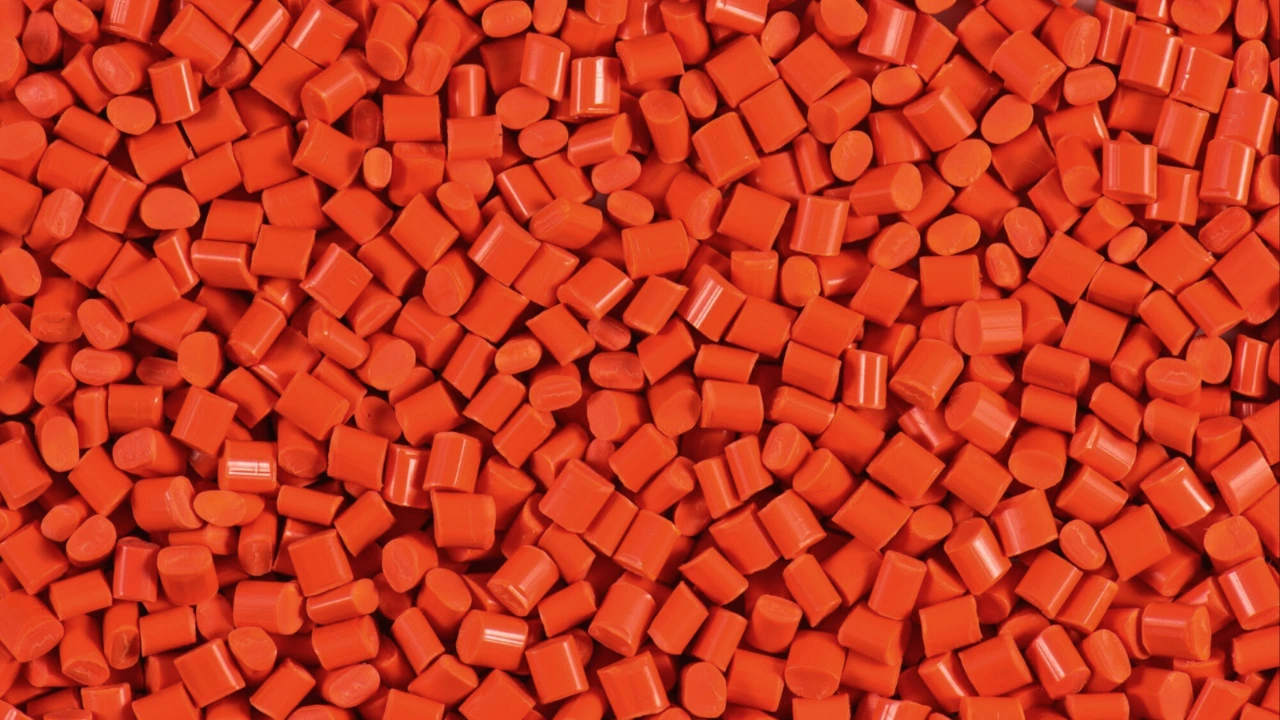LYS Polychem Blog

HFFR Cable Compound
Cables used in construction, the automotive industry and electrical networks require high flame resistance and low smoke emission. Therefore, HFFR compounds compliant with European safety standards are preferred to reduce the risk of fire. In HFFR cable compound components, maleic anhydride modified binders are used to increase compatibility with the polymer matrix. In addition, mineral additives such as Aluminum Trihydroxide (ATH) and Magnesium Hydroxide (MDH) are the main flame retardants.
What is HFFR Compound?
Halogen Free Flame Retardant (HFFR) compounds are special materials that offer high resistance to fire. These compounds use Aluminum Trihydroxide (ATH) or Magnesium Hydroxide (MDH) as flame retardants. Unlike traditional, halogen-containing materials, HFFRs emit far less toxic gases and smoke upon combustion. This makes them safe for both the environment and human health. In addition, the mechanical strength of the material is increased thanks to its reinforced structures with flexible copolymers and binding agents.
What are the Basic Components?
The basis of HFFR cables is polyethylene and its compatible copolymers. Flexible polymers such as LLDPE, EVA or EBC allow the use of high levels of mineral additives. This is because these cables usually contain intense flame retardants such as ATH or MDH. However, these additives have a dense structure and if they are not compatible with the polymer, they reduce the durability of the cable.
Special binders containing maleic anhydride are used to facilitate the combination of polymer and filler content. Magnesium stearate, silicone-based lubricants and antioxidants are also added for smooth processing of the mixture.
HFFR Cable Compound Production Process
The HFFR production process takes place in three main stages. These can be listed as follows:
Raw Material Preparation: Polymers, halogen-free flame retardants and performance enhancing additives are carefully selected. Mineral compounds such as magnesium hydroxide or aluminum hydroxide are prepared in a way that they can be mixed without damaging the polymer structure.
Extrusion: The prepared components are mixed in high precision mixers. The blend is then melted under controlled temperature and pressure using extruder machines, forming a homogeneous mixture. During this phase, flame retardants are evenly dispersed throughout the polymer.
Granulation: The melted mixture is cooled and granulated. The resulting granules have properties suitable for insulation and coating processes. The critical point of production in terms of both processability and safety is the quality of the granules.
HFFR vs. PVC Compounds: Key Differences
PVC compounds, which have been used in cable production for many years, are reinforced with flame retardant additives to meet basic safety requirements. However, their ability to emit dense smoke and toxic gases in case of fire poses a serious risk, especially in enclosed areas with high human traffic.
HFFR (Halogen-Free Flame Retardant) materials aim to minimize these risks. Corrosive or toxic gas emissions and smoke densities are low during combustion. Only water vapor is released. Thanks to these properties, they are preferred in buildings where fire safety is of primary importance.
In terms of thermal resistance, both material types can operate between -50 °C and +90 °C. However, FR-PVC can reach higher temperatures, depending on its formulation. Nevertheless, when it comes to fire safety, HFFR compounds make a clear difference.
Advantages of HFFR Cable Compound
HFFR is a material that stands out in the cable industry in terms of safety and environmental impacts. It is preferred in various sectors thanks to the many benefits it provides compared to traditional materials. If we list these advantages;
Halogen Free: HFFR compounds do not contain halogenated materials such as PVC and therefore do not produce toxic gases at high temperatures. This prevents gas poisoning caused by smoke.
Fire Resistant: Slowing the progression of the flame, it facilitates the control of the fire. It is an ideal solution especially in applications where fire safety is at the forefront.
Low Smoke Density: It facilitates evacuation and intervention processes thanks to its low smoke production in case of fire. This feature provides a great advantage in enclosed areas where visibility is critical.
High Electrical Performance: When used as insulation and sheathing material in cables, it provides reliability.
Environmentally Friendly and Non-Toxic: Free of lead, mercury and other substances harmful to human health.
High Temperature Resistance: Strengthened with flame retardant additives such as ATH (Aluminum Trihydroxide) and MDH (Magnesium Hydroxide), it maintains its strength even at high temperatures.
Bright and Safe Color Options: High visibility insulation colors make it easier for emergency responders to identify cables in emergency situations.
Compatible with Advanced Manufacturing Technology: Compatible with specialized processing technologies such as Co-Kneader, its structure ensures homogeneous mixing and consistent quality.
Application Areas of HFFR Compound
HFFR Compound is used in many fields such as housing, transportation, communication, telecom or engineering applications. Especially in buildings where safety is prioritized, the use of compounds is preferred to minimize the risk of fire and possible damage.
In critical infrastructures such as power plants, chemical and pharmaceutical production facilities and data centers, HFFR materials contribute to the protection of people and equipment in case of fire. Therefore, it is preferred for safety reasons in plant and engineering structures.
Common applications include:
- Cabling applications (ATH and MDH-based solutions)
- Applications with high fire resistance in the construction industry (BFR additives)
Flooring systems (reinforced with ATH and MDH)
Insulation materials (formulations containing BFR).
HFFR compound not only provides fire resistance, but also low smoke density and prevents the release of toxic gases, providing an alternative that is sensitive to human health and the environment.